When I was in first grade, I thought I was hot stuff, because I was the first in my class to count to 100. I, however, can’t hold a candle to my son, who is 3 years, 4 months. He can verbally count to 100; count at least about 40 loose objects; identify numerals at least up to 60; count from 19 backwards; and understands the concept of 0. Here is how I taught him this math.
Learning how to teach a child to count using the Montessori method made me timid to do any counting with my toddler son at first. In Montessori, after the long red rods can be sorted in order (10 in all) from short to long, rods of alternating colors are given to the child, which the child learns to count to 10 with. She writes that having the unified rod, such that there are, say, 8 differently colored pieces, but only one rod of 8 helps cement the idea that “8” is a singular concept, not that 8 is 1 + 1 + 1 + 1 + 1 + 1 + 1 + 1. So, I was hesitant to do any counting with loose objects at first.
I probably didn’t have to be so worried about this. Montessori herself writes that the children usually come to school already knowing how to count up to 3. She also writes that letting them count with money (coins), which are loose objects, is one of the best introductory lessons to money possible.
So, at first, I was hesitant to do any counting, instead trying to get him to do other Montessori materials. But, counting simply burst out of him. He just loved to count. There was no stopping the counting. Funny story: I had got a library book on different historical architectural buildings. I didn’t know it, but the first page featured bare breasted women, claiming that is how the women dressed during the Minoan age. The very first thing my son counted, past 2 or 3, was these bare breasted women–and he counted, pretty accurately, up to 9!
After this, any time we counted, I tried to stress left to right counting. So, when we counted loose objects, I put them in a line, and counted them left to right. An abacus helped. This brings order to the counting and prepares for reading. This really went a long way, as evidenced later, when he would count, counting each object once. Indeed, for quite some time, he often counted the same object twice or skipped some objects. Per Montessori’s advice, I never corrected him. Instead, I gave him ample practice, to work it out on his own, (yes, self-esteem matters) and looked for more activities to reinforce 1:1 correspondence. Putting objects, such as ping pong balls, in cups in an egg carton is a good activity for this 1:1 correspondence.
Even earlier than this work, we worked on numerals, which is simply that a 1 is represented by “1.” I used matching games for this. He had already done letters, which we did by matching foam letters to letters in a book. For numerals, we had a tall height measurement chart, that a friend made for us, which marked off each foot. I would show him a numeral in a book, say “2,” then ask him to find it on the height chart. This is what we did, but any matching activity would work. (Yes, Montessori used sandpaper letters for this … I found I could teach the concept very young, around 2 years old, using matching games.)
Then, when my son was 2 years, 10 months, I did put Montessori’s advice to use about counting with rods, i.e., fixed instead of loose objects, but in a different way, using something even more simple than arranging the long red rods. I had Unifix cubes, and I got the Unifix tray that the cubes, put into rods, can be put in, from rods of 1 to 10. This is even easier than the long red rods, because the rods built from Unifix cubes go in a fixed tray; they are not loose on the floor–thus giving a strong “control” for the child, thus allowing even younger children to do it.
I put the Unifix cube rods together, sized from 1 – 10, and had my son put them in the tray. I do not purposely add little “bells and whistles” to our learning activities, but he wanted to carry the rods over on the trailer of his toy truck–and if he wants to do that, it is totally fine with me. We would, for instance, bring the “1” rod over, put it in the tray, then count that there was 1 cube, and I would point to the numeral “1” and say “1.” This united the number of cubes to the numeral, using the fixed rod. This really cemented the concept. I would say this, hands down, was the base of all good counting activities that we did from then on.
As far as sorting by length, I found that he naturally sorted them from shortest to longest, while they were otherwise loose on the floor, as a matter of being able to then orderly pick them up in his truck to carry them over to the tray. Really: education with a purpose works so well! This makes me think that loading the rods on the truck was a bit more than just a “bell/whistle.”
Having the rods laid out like this, in the tray, shortest to longest, really showed for instance that “8” is larger than “7.” Several months later when he did the iPad app “Bugs and Numbers,” my mouth dropped when he easily could answer “which is less” and “which is more” questions.
When my son turned 3, I made sure to have 3 candles, with the numeral “3” on the cake. I only lit up the 3 candles, not the “3” itself, so that there would be only 3 candles lit. I also had him practice blowing out candles, one at a time, so he could feel that he did this 3 times. Yes, everything is learning in our house. 😉
It was after this that I accidentally invented a great way to teach the concept of 0. My son often went to the top of our stairs to sit down to put his shoes on. I printed out some numerals to put on our stairs, so that I could give him the choice, to sit on stair number 1, 2, 3, or 4 to put his shoes on. I ended up not doing this, not right away anyway, but I did end up inventing many games.
I printed out 2 sets of numerals, with the thought that I could place one set upside down on the stairs and play a game where we picked a numeral from the second set at random, then he would go up that many stairs, and match the card in his hand to the card on the stair. This proved to be too much (picking them at random is not something he would tolerate; they had to be in order), but he did enjoy putting one set of numerals in order, then laying out the numerals upside down on the stairs, then laying out the second set in order, then finding each “match” one by one, turning the card in the first set to see that they matched.
And, I realized I could easily print out a numeral for “0.” It was brilliant: It so easily showed that “Zero is nothing,” and only by going up to the first stair do we get to “1.”
Having the numerals laid out like this again so easily showed how the numbers increased, and that “4” is “greater than,” say, “3.” My son would count each stair, going up, again reinforcing 1:1 correspondence. He would then go downstairs, counting backwards. When he got to the bottom, he would say, “Blast off!” Every 3 year old needs to have a stair case with numerals laid out like this.
On the ability to arrange rods by sight, without any math behind them yet: I do have some homemade wooden rods, sized 1″ – 10,” which are not painted, so they do not alternate in color. I was pretty stunned when he grabbed these at random and, up to 6″, put them correctly on the stair, next to the numeral. So, the 1″ rod was next to the 1, and so on. He still perceptually could see the difference in length, even though we were counting before really working intensely with arranging the rods by sight.
I had read to not move on to counting past 10 until up to 10 is solid. Right when he turned 3, we worked on counting out loose Unifix cubes, putting them into a rod, and then putting them on the tray. I also laid out the cubes loosely in groups 1 – 10 and asked him to match foam numbers to the loose groups. He could perceptually, i.e., without individually counting, identify up to about 6. After this, he had to count them, which he was reluctant to do at first. But, in time, he mastered this pretty well, and thus was able to count out 10 loose objects, accurately, with a 1:1 correspondence. Bingo. Done. Time for more.
To count past 10, I have found a pretty good pattern is to first simply work on verbally counting in order. We would verbally count up to 30. This first introduced him to the idea that the numbers start over such that it’s easy to count twenty-one, twenty-two, twenty-three, and so on. He skipped the number “20” for the longest time. He went from 19 straight to 21. Simply verbally going over the numbers enough times corrected this.
In Montessori, teen beads are used to count past 10. There are beads grouped in 10 and others that are single. After getting to 10, a “10 bead” is laid out and 1 – 9 beads are placed after it to teach each number. I have yet to invest in this, mostly because I have so many other materials already.
I did it with Unifix cubes. I laid out 10 of one color, counting as I assembled them, and I switched colors with every 10 I put out, such that it was one very long rod. The first time I did it, I went all the way to 80, because my son enjoyed it so much. From this, he learned to count to 30 really well. I have a video of him, at 3 years, 2 months, counting, and, after 20, he loses count, but because of the way the colors are, he goes back to where the new color for 21 – 30 starts and finds his place at 21. When he got up to 30, instead of 30, he said “20-10,” which makes a lot of sense. I did like doing the Unifix cubes, because they are large, and easy to count.
To teach the pattern of numbers, I ended up printing out a number with three zeroes laid out like ” 0 | 0 | 0 “. I then printed out 2 sets of numbers 0 – 9 and one extra number “1.” I then simply counted. I put a 1 in the last 0 spot and then put a 2 over it, then a 3, then 4, and so on. When we got to 9, I would say, “We ran out of digits!!”, like it was dramatic, then I would clear out the numbers, and put the “1” in the second 0 spot, showing how it now said “10.” He loved this and stayed with me to 100. I’ve done it 2 or 3 times since.
After this, we’ve been verbally counting. He loves to count to 100–or, at first, try to. I pointed out to him how sixty sound like six, seventy sound like seven, and so on. He at first could get to 50, then 60. He would have trouble getting from 69 to 70. I would give a simple assist by asking “what comes next? 70 or 80?” A few times like this, and he got it.
He had trouble, at 3 years, 4 months, identifying numerals past 20. If he saw “21,” he might have said 12. I did some activities towards correcting this. I would write down two numbers, say “28” and “29” and ask “which is 28?” “Which is 29?” This was easier than doing “18” and “28.” I was pretty surprised when he found a box that said “100 calories” and said, “That says 100!” Using a calendar every single day helps this, as the numbers go up to 30. Typing out the numbers, in order, in Microsoft Word was a big hit, too. However, what helped the most is when my son could finally write the numerals. At around 3 years, 9 months, there was an explosion in writing and drawing skills. My son, out of nowhere, drew complex things. It is then that he spontaneously starting writing numbers. It was then when he could easily identify numerals, as high as 80, 90, even over 100. Montessori observed that children learn better by touching things than by seeing things, and this proved true in learning numerals, that writing came before reading.
The only thing left is matching quantities to numerals with the larger numbers. I have this Base Number 10 Concept. This really is the same thing as the Montessori teen beads, except as cubes, not beads. As one activity that I did with this: I took the individual cubes and laid them on the 100 square. I counted them out for him, which clearly showed how I got to 10, then started over in the next row, then got to 20, and so on. I would love to do more matching quantities to numerals with this, but every time I get it out, he wants to use it to “build buildings” (e.g., a “parking garage”). Update: At 3 years, 9 months, he now does this lesson. Another game is to put, say, 2 rods of 10 down and, say, 3 individual cubes, and ask the child to build the number by putting together the number 23.
For practice, the iPad app “Bugs and Numbers” has been great for when he wants to practice with anything related to numbers. I am in favor of iPad apps for practice, but we did do a lot of concrete learning before doing the app.
I have seen my son count out about 40 loose objects, and do it accurately. We routinely ask him to get us X of something. When putting train tracks away, my son’s dad asks him, “Can you put away 6 tracks? Now how about 7?” We weigh things on the scale at the grocery store. When I removed everything from the scale once, he noticed the needle went back to 0, and that there were 0 things on the scale. He initiated doing the song “5 Little Monkeys,” where 5 monkeys jump on the bed, then 1 falls off, then there are 4, and so on. Except, he started at 19 and went all the way back to 0. He found a measuring tape meant for sewing, and counted the numerals on there, which went up to 60. When he was 3 years, 9 months, he loved to go around measuring things. He is also adding now. We are starting to work on double digit adding, because he has single digit adding down.
Join me on Facebook
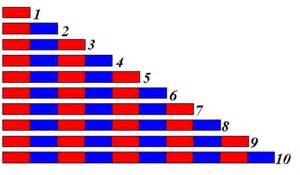
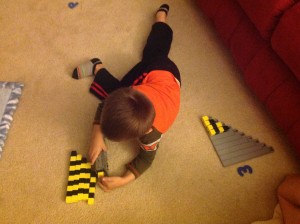
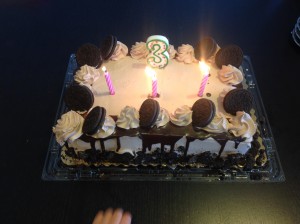
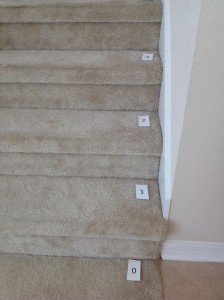
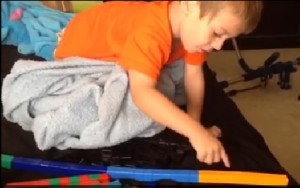
One thought on “How I Taught My 3 Year Old to Count to 100”